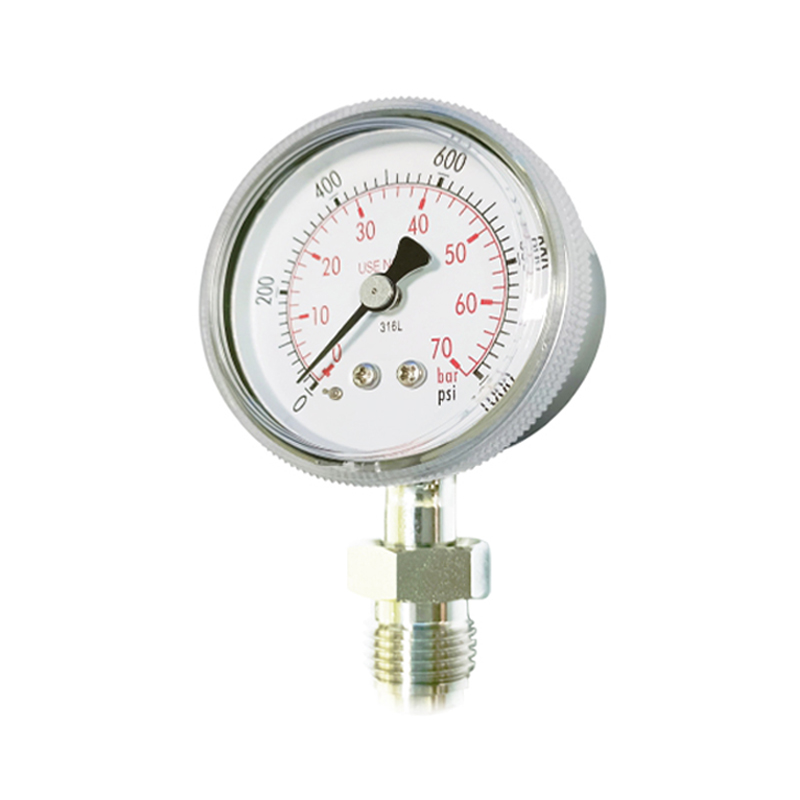
Ноя . 27, 2024 14:02 Back to list
Understanding Diaphragm Pressure Gauges in OEM Applications for Accurate Measurements
Understanding OEM Diaphragm Pressure Gauges A Comprehensive Overview
Diaphragm pressure gauges are essential instruments utilized in various industrial applications to measure pressure levels accurately. These devices are known for their reliability, sensitivity, and ability to withstand harsh environments. Original Equipment Manufacturers (OEMs) commonly utilize diaphragm pressure gauges in their systems due to the precise readings and durability they offer. This article explores the working principles, construction, applications, and advantages of OEM diaphragm pressure gauges.
Working Principle
At the heart of a diaphragm pressure gauge is a flexible diaphragm that responds to pressure changes. When the pressure of a fluid (liquid or gas) is applied to one side of the diaphragm, it reacts by deforming. This deformation is then translated into a linear movement, which drives a mechanical linkage. The movement is subsequently amplified and transferred to a pointer on a dial, providing a readable indication of the pressure level.
The gauge operates on the principles of mechanical advantage and deflection. The diaphragm's deformation is proportional to the pressure applied, enabling the gauge to deliver accurate readings even at relatively low pressure levels. Many diaphragm pressure gauges also incorporate a variety of materials in their construction, allowing for compatibility with numerous media and environments.
Construction
The construction of diaphragm pressure gauges typically includes the following components
1. Diaphragm Usually made from metals like stainless steel or special alloys, the diaphragm's material is crucial for ensuring the accuracy and reliability of the gauge under varying pressure conditions.
2. Pressure Socket The point of connection for the pressure media, which leads to the back of the diaphragm. It often features threads for easy installation.
3. Spring Mechanism In some gauges, a spring is utilized to provide a reference force, improving measurement accuracy, particularly in dynamic applications.
4. Dial and Pointer The user interface for pressure reading. The dial is marked with graduated units of measurement, while the pointer indicates the current pressure level.
5. Housing The protective casing, often made from robust materials, shields the internal components from environmental factors, such as dust and moisture.
oem explain diaphragm pressure gauge

Applications
Diaphragm pressure gauges find widespread application across various sectors, including
- Oil and Gas Used for monitoring pipeline pressures and ensuring the integrity of systems. - Chemical Processing Essential for measuring pressures in reactors and storage tanks. - Water Treatment Helps in controlling pressures within filtration systems and pumps. - Food and Beverage Industry Ensures safe pressure levels in processes and equipment. - HVAC Systems Monitors pressures in heating and cooling systems.
Their versatility and robustness make them suitable for both high and low-pressure applications. This adaptability is particularly appealing to OEMs who require precision instruments that can operate effectively in diverse settings.
Advantages of OEM Diaphragm Pressure Gauges
1. Accuracy and Reliability Diaphragm pressure gauges provide consistent and accurate measurements, which are vital for maintaining operational efficiency and safety.
2. Durability The construction materials used, notably for the diaphragm, are designed to endure harsh conditions. This ensures a long service life and reliability under pressure.
3. Compact Design These gauges can be designed to fit into tight spaces, making them ideal for applications where space is a constraint.
4. Versatility With various materials and configurations available, these gauges can be tailored for different applications, including corrosive or viscous media.
5. Low Maintenance Generally, diaphragm pressure gauges require minimal maintenance, contributing to reduced downtime and operational costs for OEMs.
Conclusion
OEM diaphragm pressure gauges play a critical role in securing the safe and efficient operation of various industrial processes. Their accuracy, durability, and adaptability make them indispensable for manufacturers who depend on precise pressure measurements. As technology evolves, these instruments continue to improve, offering enhanced features and robustness, thereby further solidifying their position as essential tools in modern industry. Understanding how these gauges work and their applications can help businesses select the right instruments for their needs, ensuring optimal performance and reliability.
-
High-Precision 5 Valve Manifold Differential Pressure Gauge Suppliers
NewsApr.29,2025
-
High-Precision Diaphragm Vacuum Pressure Gauges Manufacturers & Quotes
NewsApr.29,2025
-
Omega Differential Pressure Gauges High Accuracy & Durability
NewsApr.28,2025
-
Low Pressure Differential Pressure Gauges Precision Solutions & Quotes
NewsApr.28,2025
-
Digital Diaphragm Pressure Gaauge Precision Measurement & OEM Quotes
NewsApr.28,2025
-
Differential Pressure Gauge China Price High-Accuracy & Best Quotes
NewsApr.28,2025
